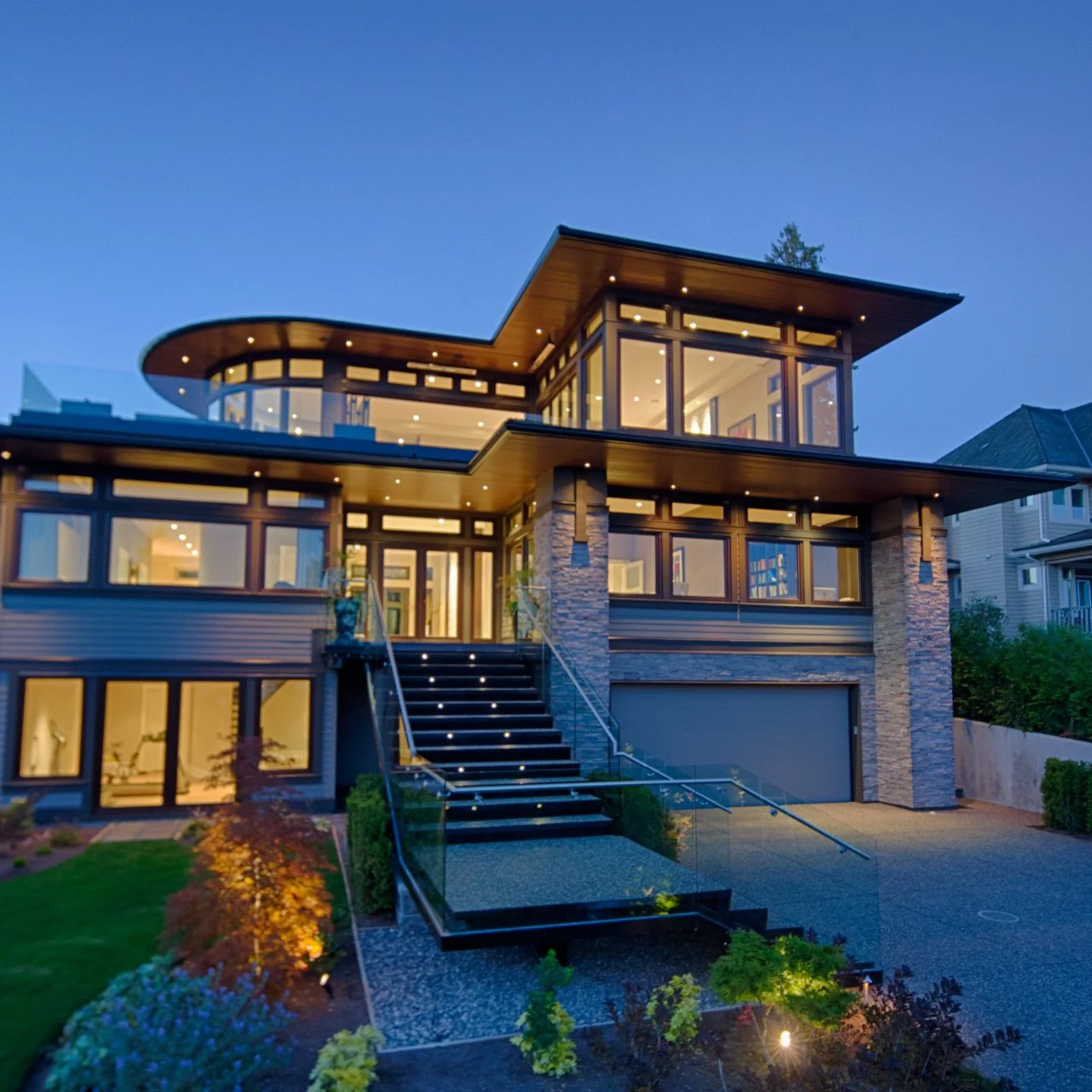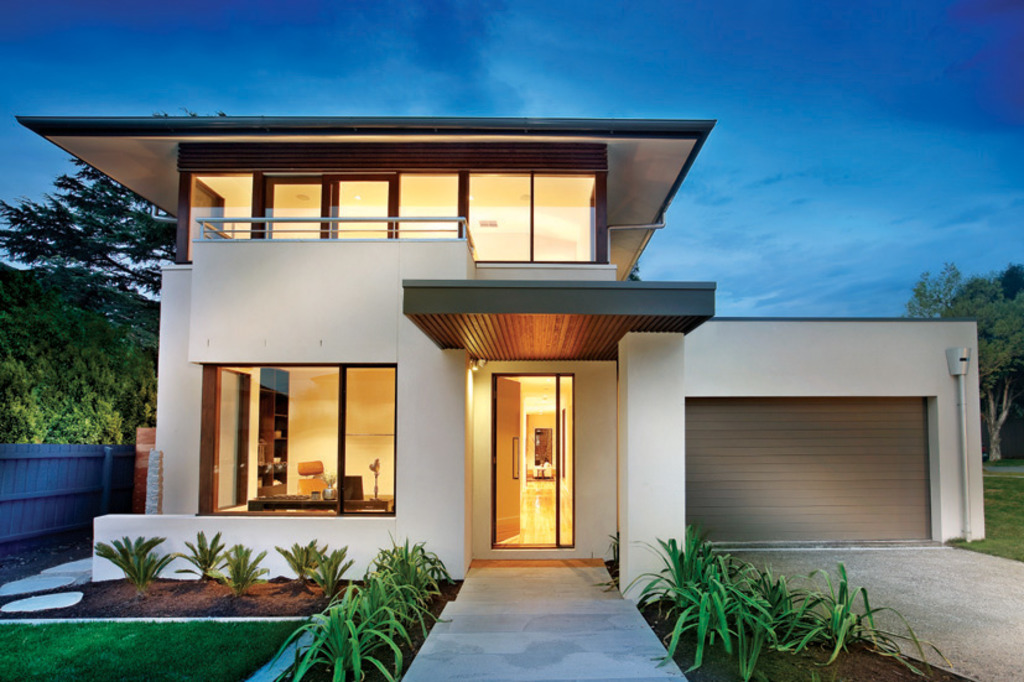Discover the current Trends in Modern Home Architecture for Your Following Job
In today's advancing building landscape, contemporary home style patterns are significantly prioritizing functionality and sustainability. The assimilation of open floor plans promotes both connection and a wealth of all-natural light, while using lasting products shows a growing dedication to eco-friendly practices. Developments in smart home technology are improving just how we connect with our living rooms. As we explore these aspects, it comes to be evident that the future of home design is not just concerning appearances, but also about producing versatile environments that enhance our lives. What might this indicate for your following task?
Open Floor Plans
Open up flooring strategies are increasingly popular in contemporary home design, as they cultivate a sense of spaciousness and connectivity amongst living locations - melbourne home residential projects. This building trend eliminates standard barriers, such as walls and doors, that usually separate kitchen areas, dining spaces, and living areas. By incorporating these locations, homeowners can appreciate an extra cohesive setting that urges communication and flexibility
One of the key advantages of open layout is their ability to enhance natural light throughout the home. With fewer wall surfaces obstructing light flow, rooms really feel brighter and a lot more welcoming, creating a pleasant environment. Furthermore, this format permits less complicated movement and socialization, making it optimal for households and amusing visitors.
Moreover, open layout can supply better design convenience, making it possible for home owners to curate their rooms with a much more unified aesthetic. The smooth shift between locations permits creative design choices and furniture setups that can adapt to various demands.
While open layout have several benefits, it is necessary to think about potential challenges, such as sound control and privacy. When thoughtfully created, open floor strategies continue to be a characteristic of modern home architecture, mirroring modern way of livings.
Lasting Materials
Over the last few years, the usage of sustainable products in home style has actually obtained substantial focus as home owners look for to lower their environmental impact. This pattern reflects an expanding recognition of the ecological effects of standard building materials and a need for greener alternatives.
Lasting materials encompass a wide range of options, including redeemed timber, recycled steel, bamboo, and low-VOC (volatile natural compounds) paints. Redeemed timber, for example, not just reduces logging but also adds character to a home with its distinct history. Bamboo, recognized for its quick development, presents an environmentally friendly option that is both resilient and cosmetically pleasing.
Incorporating lasting materials right into home design additionally enhances power efficiency. Insulation made from recycled products, for instance, can considerably lower power consumption for heating & cooling, resulting in lower energy expenses. Additionally, lots of lasting materials are sourced in your area, further decreasing the carbon footprint related to transport.
As the demand for ecologically accountable building and construction expands, engineers find out here and home builders are progressively prioritizing sustainable materials. This shift not only benefits the environment but likewise develops healthier space for home owners, straightening contemporary style with a sustainable future.
Smart Home Modern Technology
The integration of wise home technology has emerged as a popular trend in modern style, complementing her comment is here using lasting products. melbourne home residential projects. This technological development enhances the functionality and effectiveness of residential rooms, offering home owners with extraordinary control over their living settings
Smart home systems enable individuals to manage illumination, environment, protection, and amusement via centralized applications or voice commands. These attributes not only improve comfort however additionally advertise power conservation by enhancing source use. Clever thermostats can discover customer preferences and adjust home heating or cooling down as necessary, substantially lowering power usage.
Additionally, advances in home automation help with boosted protection through smart locks, video cameras, and alarm, which can be monitored remotely. This combination boosts satisfaction for home owners while supplying added benefit.
Incorporating smart technology into home design additionally affects architectural looks. Developers are currently developing areas that flawlessly incorporate technology, guaranteeing that tools are both practical and aesthetically enticing. Because of this, contemporary homes embody an unified equilibrium between innovative innovation and thoughtful layout, making smart home technology an essential factor to consider for any type of future building project.
Biophilic Style
How can design enhance our connection to nature? Biophilic design acts as a compelling response to this question, integrating natural aspects into constructed environments to foster a deeper bond between occupants and the surrounding community. This layout approach prioritizes the use of natural products, natural light, and greenery, producing rooms that promote well-being and improve the lifestyle.
Integrating attributes such as huge windows, living wall surfaces, and interior yards can significantly enhance air top quality and offer a sense of serenity. The calculated placement of these aspects permits unhampered views of nature, removing the obstacles between interior and outdoor rooms. Additionally, using all-natural materials like wood, rock, Going Here and water not just shows the atmosphere however also stimulates a sensory experience that reverberates with human reactions.
Biophilic design likewise highlights the value of biodiversity, encouraging using native plants and lasting landscape design techniques. By accepting this strategy, designers can create homes that not just respect the all-natural world yet also improve the mental and emotional wellness of their citizens. Embracing biophilic principles in modern-day style is an essential action towards a much more harmonious conjunction with nature.
Flexible Spaces

Key aspects of flexible spaces include movable dividers, modular furniture, and innovative storage solutions that boost use. These attributes allow locals to customize their atmospheres according to their choices, fostering a feeling of ownership and personalization. Including modern technology, such as smart home systems, can additionally facilitate this adaptability by making it possible for individuals to manage lighting, environment, and multimedia experiences with ease.

Conclusion
Integrating the latest patterns in modern-day home style can significantly enhance the living experience. Open layout foster connectivity and all-natural light, while sustainable products promote eco-friendliness. The integration of wise home innovation boosts efficiency and protection, and biophilic design establishes a vital connection to nature. Additionally, developing versatile rooms makes certain flexibility to altering demands. Collectively, these components contribute to a harmonious, cutting-edge living environment that stays practical and welcoming for several years ahead.